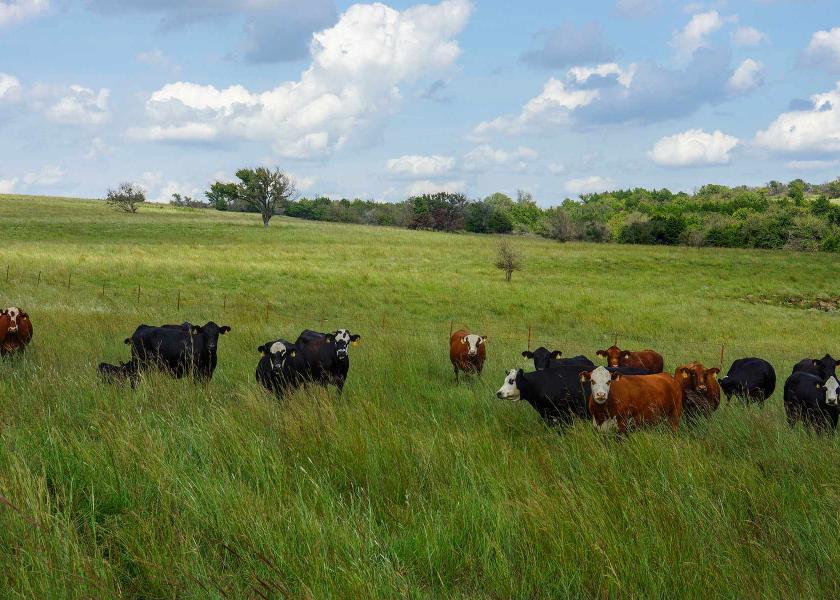Sexten: Same Goal, New Tools

The goal of improving sustainability is a common refrain across animal agriculture these days. There are few organizations who haven’t made some claim toward making strides in this area. Janette Barnard’s most recent Prime Future newsletter highlighted how products directed at solving big picture claims like sustainability do little to communicate their ability to face the daily challenges of agricultural operations.
“Everything is the Enemy of Something'' showcased the opportunity ag technology companies have to communicate specific aspects of broad brush claims while they deliver the practical solutions to everyday production challenges.
A recent review article in Animals by Dr. Giuseppe Pulina and his Italian research team reinforced this idea from a management perspective when they outlined key technologies needed for a sustainable and profitable beef industry.
For many outside the day-to-day, improved beef system sustainability is environmental, the vision of the pastoral setting of cows converting green grass into beef doesn’t get much more sustainable. However, when we break sustainability down to the operational goal of optimizing resources, we realize increased productivity per cow and optimum stocking rate per acre are the actual problems we need to address.
The Italian research team highlighted this and many other key goals. This article will focus on their discussion on the need to prioritize reproductive efficiency. When you consider the amount of energy used to maintain the beef herd the binary nature of successful reproductive outcomes can impact productivity in a far greater way than increasing growth.
Consider the goal of weaning 40% of the cow’s mature weight. On an individual level this goal doesn’t seem so lofty. For the average 1,300-pound cow that is 520-pound calf, a reasonable compromise with a mix of steer and heifer calves. However, when we consider this on a herd model small changes start to add up quickly. Let's assume a 93% pregnancy rate, 95% calving rate and 98% weaning rate and suddenly a 600-pound average weaning weight is required to achieve our goal at the herd level.
Feedlot closeouts with dead’s in and out comparisons provide a clear illustration to cattle feeders the cost of death loss to production efficiency. Reproductive losses to the cow herd are certainly not ignored by ranchers but the cumulative impact on production efficiency is often lost due to the long-time interval from turnout to realizing the success or failure of that mating opportunity 16 months later.
Everyone who has ever warmed up a newborn calf in the truck, bathtub or mudroom fully appreciates what each calf represents. These experiences provide immediate feedback on the management needed to maintain a high calving rate and ultimately increased weaning rates. The longer-term management decisions highlighted by Dr. Pulina’s team were a review of proven and novel technologies to consider as we enter the heart of calving season with breeding just a few months away.
With weaning as a fixed event, cows that calve early in the breeding season wean older and generally heavier calves’ early conception is clearly a more productive end goal. Additionally, the authors highlighted earlier calving offers longer postpartum recovery and the potential for shorter calving intervals. For cows that consistently reproduce, having an average calving interval under a year is a key performance metric.
The authors also reviewed the increased productivity shown in the twinning focused research herds from US Meat Animal Research Center several years ago. Also suggested was a model where cows are finished alongside their first calve. Both models provided increased productivity over the conventional model.
While adoption of these novel models is low due to system challenges Dr Pulina and team highlighted the foundation these systems are built upon is a fertile female, specifically one that is early to puberty. The ability to develop replacements using minimal resources yet still express puberty at a year of age was key to shortening the unproductive period.
Historically, selecting heifers born in the first half of the calving season was the best predictor of fertility, leveraging the cow’s ability to breed early. Today we have genomic tests to evaluate the future productivity of a heifer before we spend the first dollar on development. Technology offers the opportunity to place selection pressure on key fertility traits without having to select the biggest heifers that may ultimately drive increased mature size.
Optimal mature size was also highlighted as a path to future sustainability. The Italian group highlighted midwestern research where cow herds with smaller mature size were optimally stocked to increase per acre productivity. Large mature sizes place increased stress on the 40% weaning weight goal and reproductive success especially in non-average years where resources are limited.
A cow herd selected for reproduction, sized to match the environment are certainly not novel ideas. The ability to place selection pressure toward these sustainability goals is increasingly helped by advancements in precision livestock farming. Technology continues to advance the genomic and reproductive management toolbox to provide ranchers the opportunity to not only make faster progress but also reduce development inputs.







